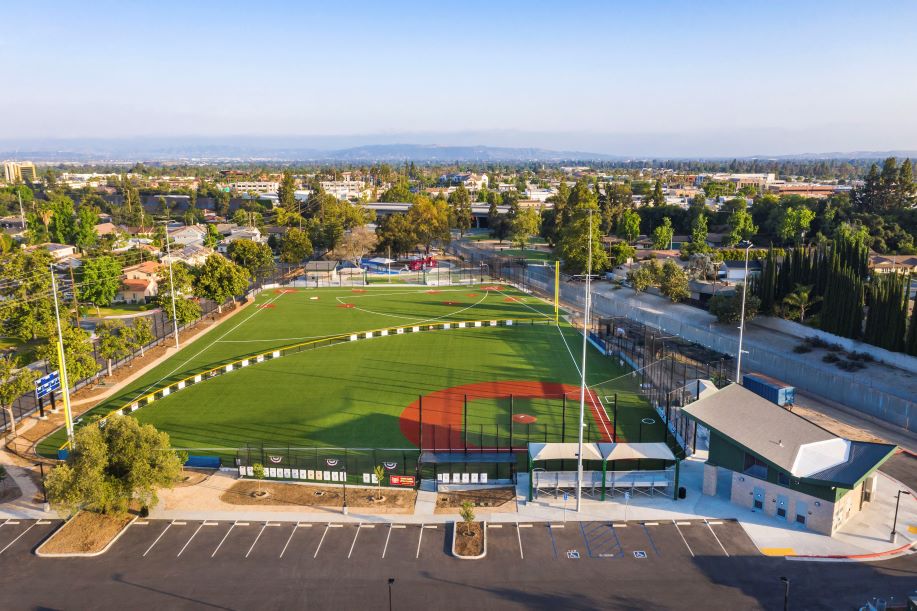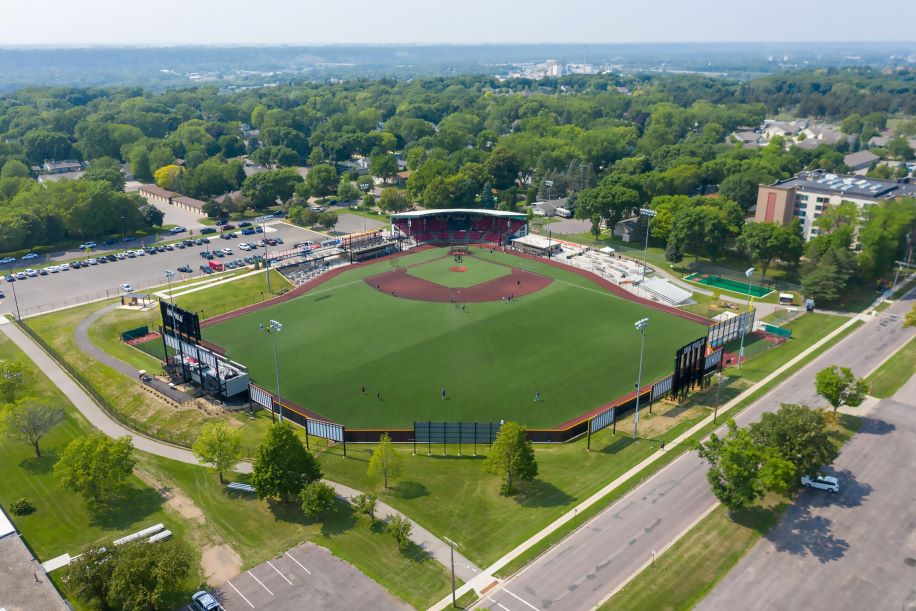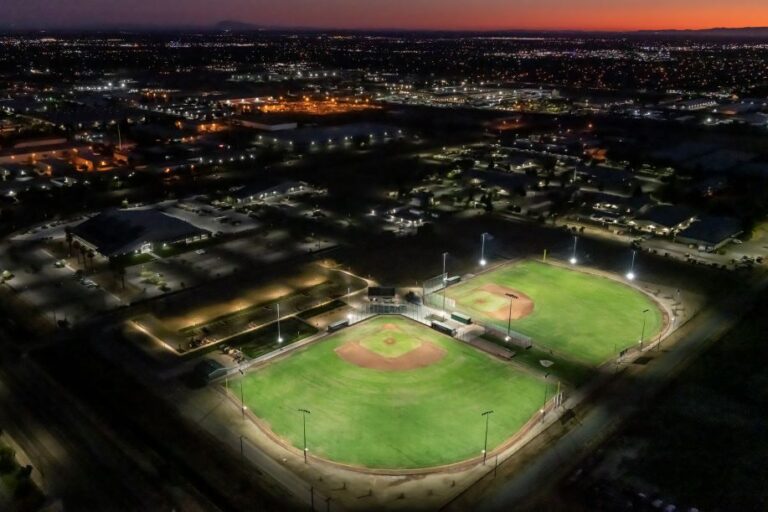By Mary Helen Sprecher
As a field manager, when you see athletes kicking around in the batting box and knocking the dirt off their cleats with the bat, you’re probably playing closer attention than anyone else. After all, that’s your infield mix they’re messing with.
But long before teams take the field, there’s a lot that goes into getting it ready. Care of the infield and turfgrass (or turf) areas are interrelated, and the field manager needs to work on both components to ensure the optimum performance of the whole facility.
Because the infield and its cousin, the warning track, don’t grow, however, it’s easy to overlook them or rate them second, since they don’t require the preseason work grass does. But by following some good practices, it’s possible to have your skinned areas shine too.
Preseason generally means raking off dry material (along with any debris that might have collected over the offseason) and discarding it. New infield mix, which is recommended to be ordered in advance, should be added and leveled.
“Grading is, of course, very important,” said Michael Munie with Perfect Play Fields & Links in Belleville, Ill.
The field should be sloped in accordance with the rules of the appropriate governing body, whether this is NFHS, NCAA or another organization. The type of field (for example a native soil field, a sand-cap field, etc.) will also factor into the equation.
For baseball, the high point of the field generally is the pitcher’s mound. This is 10 inches above home plate on a regulation field with 90-foot bases. The field is then sloped in all four directions away from the mound and across the skinned areas. Typically, softball fields will be crowned in a line from home plate through the pitching rubber to second base and on through the outfield. Remember that even a slightly low area can cause ponding of water on the surface. Therefore, it is recommended that finish grading be accomplished with laser-guided equipment.

“How often you do regular maintenance depends mainly on how often a field is used,” said Todd Smith, Ph.D., PE, LEED AP of R&R Engineers-Surveyors, Inc. “Work that should be undertaken on a regular basis can include raking of the entire area, rebuilding the pitcher’s mound, rebuilding the home plate batter’s box and chalking the batter’s box along with foul lines.” Smith cautions against falling prey to a few common mistakes in maintenance.
“For the infields, the main mistake is not doing a little maintenance each day or each time the field is used. The second-most often made mistake, in my experience, is always dragging from the center in a spiral to the outside to avoid equipment tracks if they end in the center. This is the number-one cause of what is called the ‘infield lip,’ which is when the infield mix is deposited into the first two to three feet of the outfield edge. This raises the rootzone and the grass grows through it. Then it gets raised again, the grass goes through it again.”
Munie noted that an infield lip, “can cause the ball to take some weird hops” that could possibly injure a player. The lip also creates a dam that keeps water from draining properly.
According to Munie, another typical mistake is for a worker to rush through the process of dragging the field; jokingly adding that it “makes the driver look like he is building skills for a national drifting competition.”
Excessive speed can also cause infield material to be deposited into the grass of the field itself when the driver makes a turn.
“That being said, slow down and stay away from the edges as much as possible when dragging an infield,” said Munie. “Finish the edges with a rake or with one slow lap, being careful to stay on the infield.”
The warning track sometimes becomes an afterthought on a field, since so much attention is paid to other components. And that, said Munie, is part of the problem.
“The proper selection of surface materials is important as the warning track is an underrated component,” said Munie. “It can also serve several other functions, including drainage, acting as an access road for equipment and personnel, a place for pregame warmups and pregame ceremonies. The warning track can also serve as the location for drainage trunk lines, as well as valve boxes and irrigation components. But it’s important to remember the track needs to be wide enough to fulfill its purpose. If it’s not, an athlete moving at a full run might only have one step on it before encountering the fence.”

Synthetic fields often have synthetic infields as well. And while the care regimen is entirely different, preseason maintenance is just as important. If, for example, the pitcher’s mound needs to be replaced, it will be necessary to take the level of play into consideration; pitching distances, as well as mound heights, will vary. It is possible to purchase pitching mound forming systems designed specifically for synthetic turf facilities, and to find products that allow the height and size of the mound to be tailored to adhere to standards set forth by the national governing body.
Beyond that, the best way to keep the infield looking and playing its best is to keep an eye on it, and to give it the same care and attention you give the turf itself. Walk it regularly, looking for playing lines that look wavy or places where the field seems to undulate – both of which indicate a displacement of infill. Groom the infield the same way you do the field. Check to make sure seams are intact and that all irrigation and drainage systems work well.
After that, it’s time to play ball.
Mary Helen Sprecher wrote this article on behalf of the American Sports Builders Association (www.sportsbuilders.org), the national organization for builders, design professionals and suppliers of materials for sports fields, running tracks, tennis courts and indoor and outdoor courts and recreational facilities.
For those who would like to become more knowledgeable about their options, the American Sports Builders Association publishes Sports Fields: A Construction and Maintenance Manual. The book walks readers through the decision-making process that should precede deciding upon a field surface, as well as its location. It also discusses various types of field surfaces: natural, synthetic and hybrid, as well as their relative advantages and disadvantages. The book is available in both hard copy and electronic form from the ASBA website, www.sportsbuilders.org.


